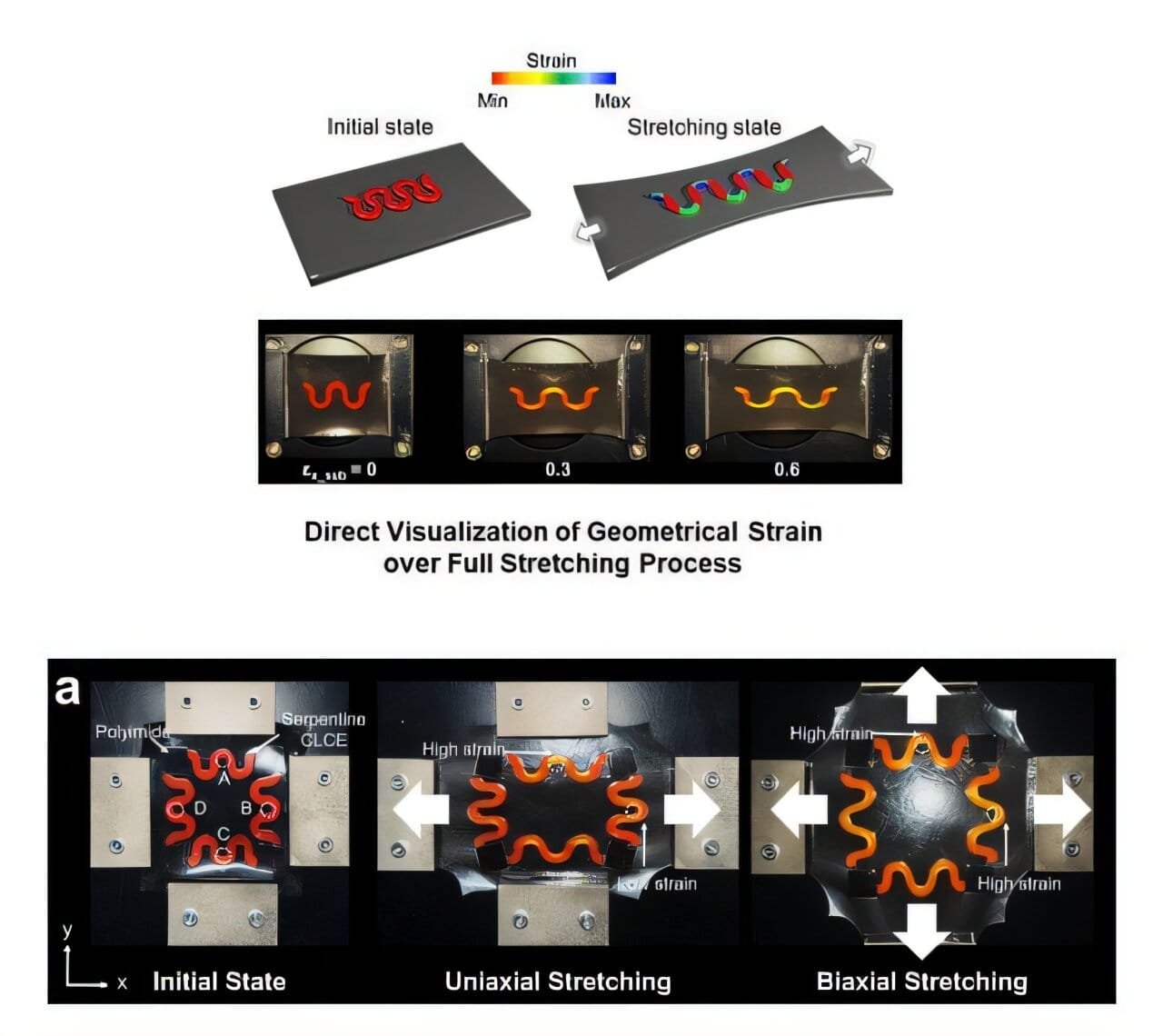A groundbreaking innovation in stretchable technology has emerged from a research team at Pohang University of Science and Technology (POSTECH). The team, led by Professor Su Seok Choi of the Department of Electrical Engineering, has developed an advanced method for analyzing the deformation of “serpentine” structures—a fundamental component of stretchable electronics. Their approach not only enables real-time monitoring of these deformations but also translates them into visible color changes. This transformative research was recently published in the journal Advanced Science and involved the collaboration of doctoral candidates Sanghyun Han, Junho Shin, Jiyoon Park, and master’s students Hakjun Yang and Seungmin Nam.
Stretchable electronics, a cutting-edge frontier in modern technology, have evolved beyond traditional flexible designs to accommodate full-range deformation, such as stretching, twisting, and compressing. These systems hold immense potential in numerous applications, including wearable displays, advanced sensors, electronic skin, biomimetic robotics, and next-generation smart textiles. Despite significant advancements, visualizing and understanding the real-time deformation of critical structural components like serpentine interconnects remained a challenge—until now.
The newly developed technology leverages a material’s ability to exhibit mechanochromism—a property where mechanical stimuli trigger color changes. The POSTECH research team employed Chiral Liquid Crystal Elastomer (CLCE), a material renowned for its capacity to change color when stretched, to observe the deformation process of serpentine structures in real time. Their innovation bridges a long-standing gap in the field, replacing theoretical simulations and post-failure analysis with immediate, actionable insights.
Revolutionizing Stretchable Technology with Real-Time Visualization
Serpentine interconnects, characterized by their wavy, elastic design, are a cornerstone of stretchable technology. These structures ensure elasticity in otherwise rigid electronic components, such as semiconductors and sensors. Historically, understanding how these serpentine structures deformed required either destructive testing or theoretical modeling, both of which had significant limitations. Researchers often had to wait for physical damage—such as breaks or fractures—to infer how deformation occurred. This lack of real-time feedback hindered progress in designing more efficient and robust structures.
The POSTECH team’s innovation changes this paradigm. By integrating CLCE, they developed a system that visually represents deformation through nanoscale color shifts. This allows researchers to monitor and analyze structural changes as they happen. Additionally, the team validated their findings using finite element analysis, ensuring the accuracy and reliability of their approach.
This real-time visualization capability opens new doors for understanding the mechanical properties of serpentine structures. It provides a direct view into how these components stretch, compress, and respond to stress, offering unprecedented insights into their behavior under different conditions. This development is particularly significant for optimizing stretchable technologies in practical applications where reliability and precision are critical.
Broader Implications and Applications
The implications of this breakthrough extend far beyond academic research. By eliminating the need for complex nanofabrication processes and enhancing the precision of structural analysis, this technology has the potential to revolutionize the stretchable electronics industry. Real-time deformation analysis can streamline the design and testing phases of product development, reducing costs and accelerating commercialization timelines.
Professor Choi highlighted the importance of this research, stating, “This research opens the door to precise evaluation and design of the connection structures central to stretchable technology.” He emphasized that the findings are expected to have far-reaching applications in various industries, including displays, semiconductors, sensors, electronic skin, soft robotics, and smart clothing.
In the realm of wearable technology, for instance, stretchable sensors and circuits are crucial for creating comfortable and responsive devices. The ability to design and test serpentine interconnects with precision ensures that these devices can withstand the mechanical stresses of daily wear without compromising functionality. Similarly, in soft robotics, where components often need to mimic the flexibility and resilience of biological tissues, this innovation provides a reliable method for optimizing structural performance.
Moreover, the technology’s ability to provide real-time feedback on structural integrity is invaluable for applications in critical environments, such as healthcare monitoring devices and advanced prosthetics. By understanding how components deform under different conditions, engineers can design systems that are both robust and adaptive, meeting the demands of increasingly complex applications.
Accelerating Commercialization and Future Research Directions
The commercialization potential of this innovation cannot be overstated. By providing actionable design guidelines for serpentine structures in various stretching environments, the technology paves the way for more reliable and efficient stretchable devices. This is particularly crucial as industries increasingly seek to integrate stretchable electronics into consumer products, healthcare solutions, and industrial applications.
In addition to its practical implications, this research also sets the stage for further exploration in the field of mechanochromic materials and their applications. Future studies could expand the use of CLCE or similar materials to other structural components, broadening the scope of real-time visualization techniques. Furthermore, integrating this technology with advanced computational tools and machine learning algorithms could enhance predictive modeling capabilities, enabling even more sophisticated designs.
The ability to analyze and optimize structural components in real time also has implications for sustainability. By minimizing material waste and improving the durability of stretchable devices, this innovation contributes to more sustainable manufacturing practices. As the demand for environmentally friendly technologies grows, such advancements are likely to play a pivotal role in shaping the future of the electronics industry.
Reference: Sang Hyun Han et al, Optical Visualization of Stretchable Serpentine Interconnects using Chiral Liquid Crystal Elastomers, Advanced Science (2024). DOI: 10.1002/advs.202408346






